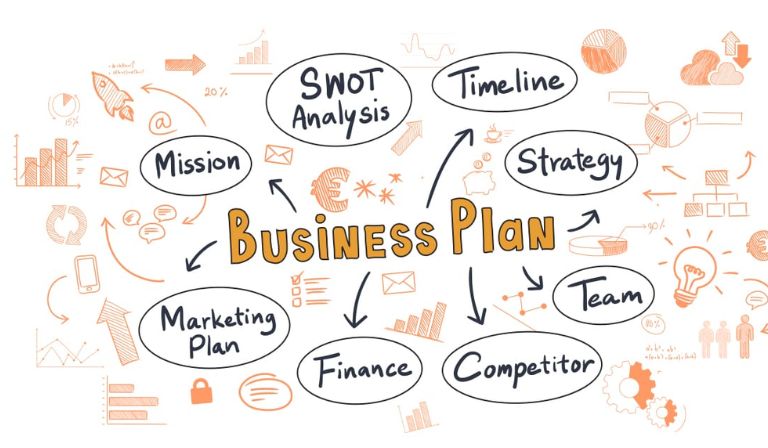A business plan serves as the blueprint for your entrepreneurial journey. It outlines your goals, strategies, and the roadmap to achieve them while anticipating potential challenges and solutions. Whether you’re starting a new venture or scaling an existing one, a well-structured business plan is crucial. Here’s a detailed guide to help you craft an effective business plan that resonates with investors, stakeholders, and team members.
Table of Contents
Toggle1. Executive Summary
The executive summary is the gateway to your business plan. Though it appears first, it’s often written last to summarize the entire document effectively. This section provides a snapshot of your business concept, goals, target market, and financial highlights.
Key elements include:
- Business Overview: A brief description of your business, its mission, and vision.
- Key Objectives: The goals you aim to achieve within a specified timeframe.
- Financial Snapshot: High-level insights into revenue projections, funding requirements, and profitability.
- Call to Action: A compelling reason for investors or stakeholders to delve deeper.
2. Business Description
This section delves into the essence of your business. It’s your opportunity to paint a vivid picture of what you do and why it matters.
Topics to cover:
- Industry Overview: The current landscape of your industry, trends, and growth potential.
- Business Model: How your business operates and generates revenue.
- Value Proposition: What sets your business apart from competitors.
- Legal Structure: Whether you’re a sole proprietor, partnership, corporation, or LLC.
3. Market Analysis
Understanding your market is crucial for success. This section demonstrates your knowledge of the industry and highlights opportunities for your business.
Key components include:
- Target Market: Define your ideal customer demographics, behaviors, and needs.
- Market Trends: Insights into emerging trends and their potential impact.
- Competitive Analysis: Identify key competitors, their strengths, weaknesses, and your strategy to gain a competitive edge.
- Market Size: Quantify the total addressable market (TAM) and your expected share.
4. Organization and Management
Investors and stakeholders want to know who’s steering the ship. Highlight your team’s qualifications, expertise, and roles.
Include:
- Organizational Structure: A visual representation of your hierarchy.
- Leadership Team: Profiles of key team members, their backgrounds, and contributions.
- Advisors: If applicable, mention advisors or consultants providing strategic input.
- Hiring Plans: Future roles you plan to add as your business grows.
5. Products or Services
Detail the core of your business—what you’re offering to customers and why it’s valuable.
Key aspects:
- Description: Clearly outline the products or services you provide.
- Benefits: Explain how your offerings solve customer problems or fulfill needs.
- Lifecycle: Discuss the development, launch, and growth stages of your products.
- Intellectual Property: Highlight patents, trademarks, or proprietary technologies, if any.
6. Marketing and Sales Strategy
A great product needs effective marketing and sales strategies to thrive. This section outlines your plan to attract and retain customers.
Topics to cover:
- Marketing Channels: The platforms and mediums you’ll use, such as social media, email, or in-store promotions.
- Customer Acquisition: Your strategy for generating leads and converting them into customers.
- Retention Strategies: How you’ll keep customers engaged and loyal.
- Sales Process: Outline your approach to closing deals, from prospecting to follow-up.
7. Operational Plan
Your operational plan explains how your business will function day-to-day. This includes logistics, production, and resource allocation.
Key points:
- Location and Facilities: Where your business operates and why.
- Technology and Equipment: Tools and systems you’ll use.
- Supply Chain: How you source materials and manage inventory.
- Key Milestones: Significant goals and deadlines to track your progress.
8. Financial Plan
The financial plan is often the most scrutinized part of a business plan. It demonstrates your financial viability and helps stakeholders assess risks and returns.
Include:
- Revenue Projections: Forecast income for the next 3-5 years.
- Expense Projections: Break down fixed and variable costs.
- Profit and Loss Statement: A detailed overview of your income and expenses.
- Cash Flow Analysis: Ensure you have sufficient liquidity for operations.
- Funding Requirements: If seeking investment, specify how much you need and how you’ll use it.
9. Risk Analysis
Every business faces risks, and being upfront about them shows you’re prepared. Outline potential challenges and your mitigation strategies.
Common risks include:
- Market Risks: Fluctuations in demand or industry shifts.
- Financial Risks: Cash flow issues or unexpected expenses.
- Operational Risks: Supply chain disruptions or equipment failures.
- Regulatory Risks: Changes in laws or compliance requirements.
10. Appendices and Supporting Documents
The final section of your business plan should include supplementary materials that reinforce your claims and provide additional context.
Examples of supporting documents:
- Market research reports
- Product images or prototypes
- Detailed financial models
- Resumes of key team members
- Legal agreements or contracts
Tips for Writing an Effective Business Plan
1. Be Clear and Concise
While the plan should be detailed, avoid unnecessary jargon. Use simple, straightforward language that can be understood by diverse audiences.
2. Tailor It to Your Audience
Customize your business plan based on who will read it. Investors may focus on financials, while team members might look for operational details.
3. Use Data to Back Your Claims
Support your assertions with credible data and research. Quantifiable metrics add legitimacy and help build trust.
4. Regularly Update Your Plan
A business plan is a living document. As your business evolves, revisit and revise it to reflect new goals, challenges, and market conditions.
5. Seek Feedback
Before finalizing your business plan, share it with mentors, advisors, or peers for constructive criticism.
Conclusion
Creating a comprehensive business plan is a pivotal step toward turning your vision into reality. It not only guides your business operations but also communicates your vision to potential investors, partners, and stakeholders. By following this structured approach, you can craft a robust plan that sets the foundation for sustainable growth and success.











